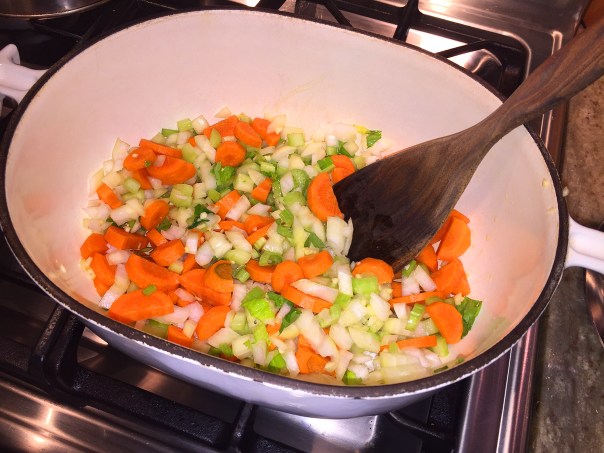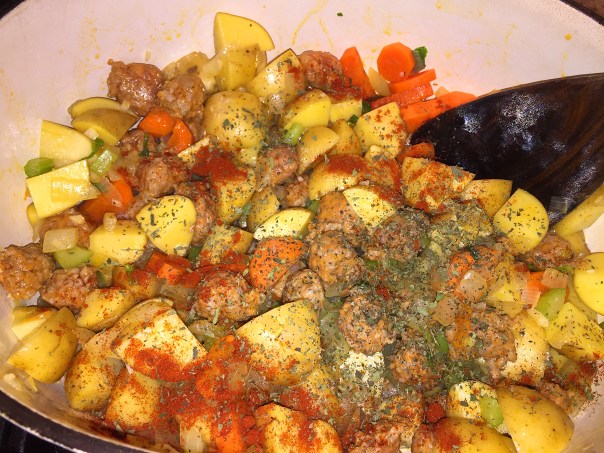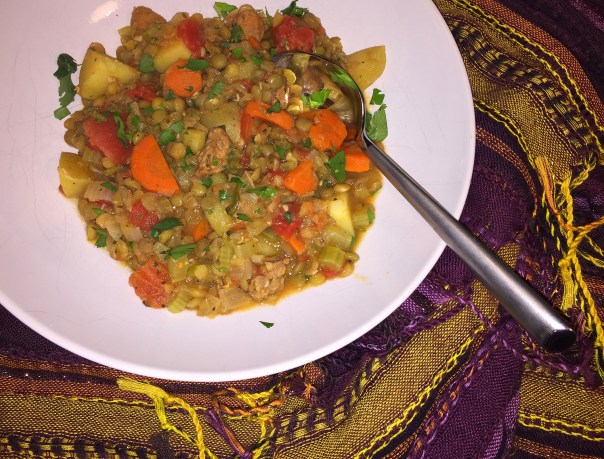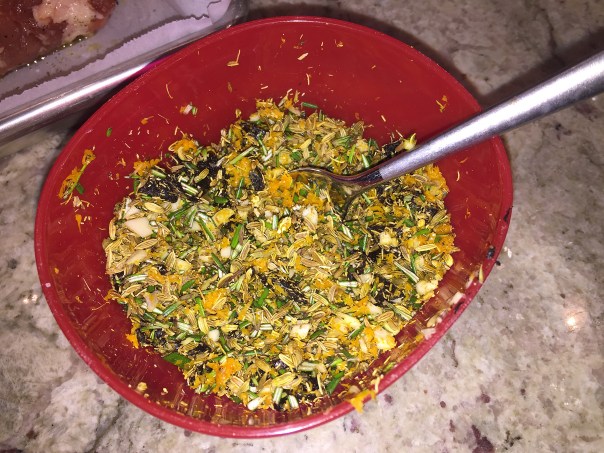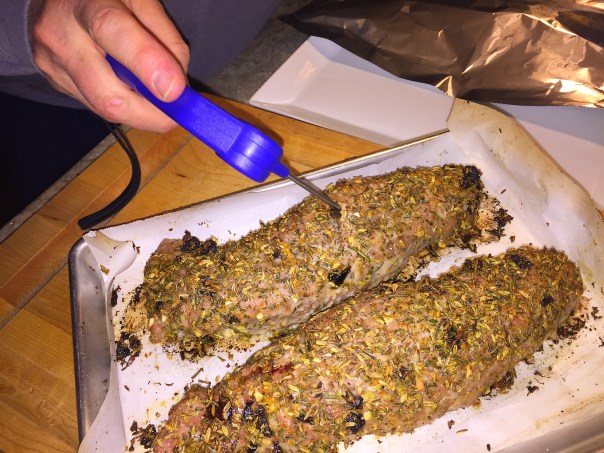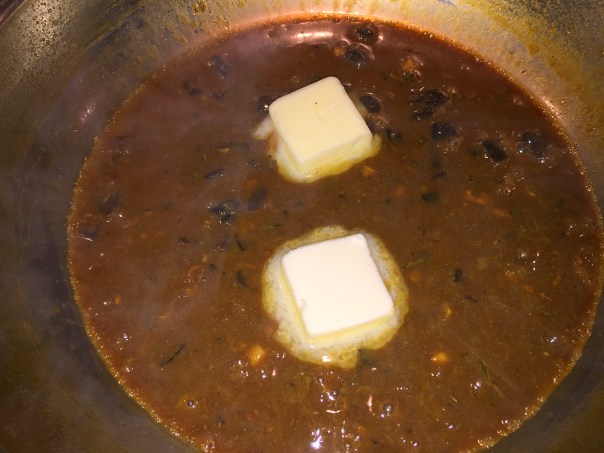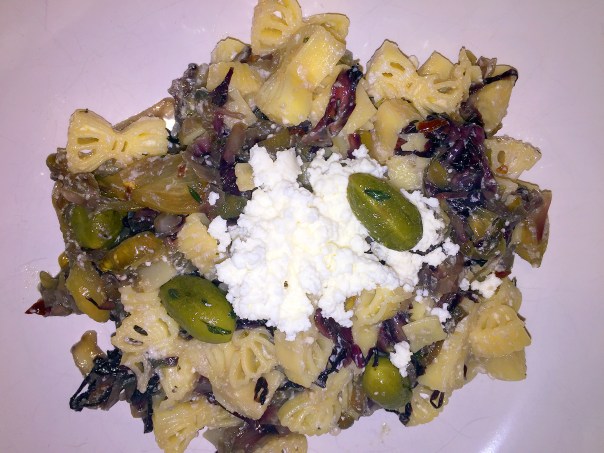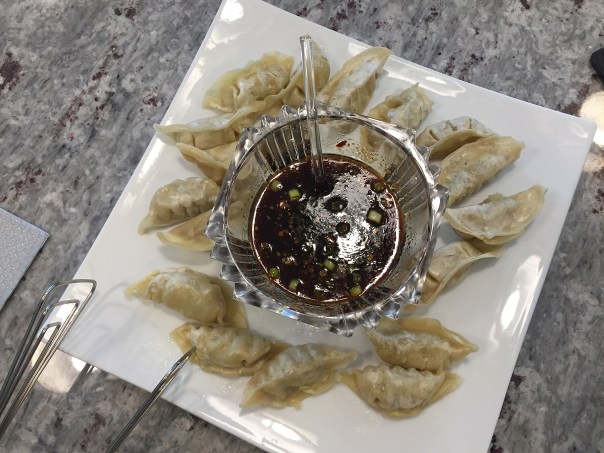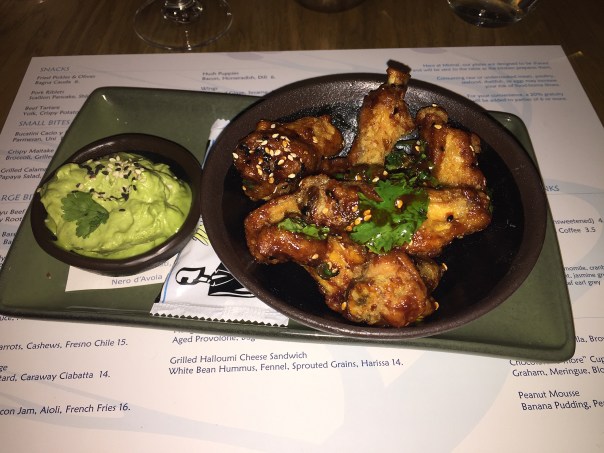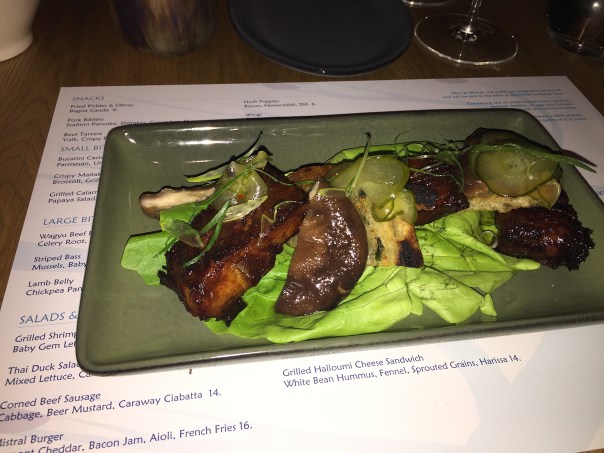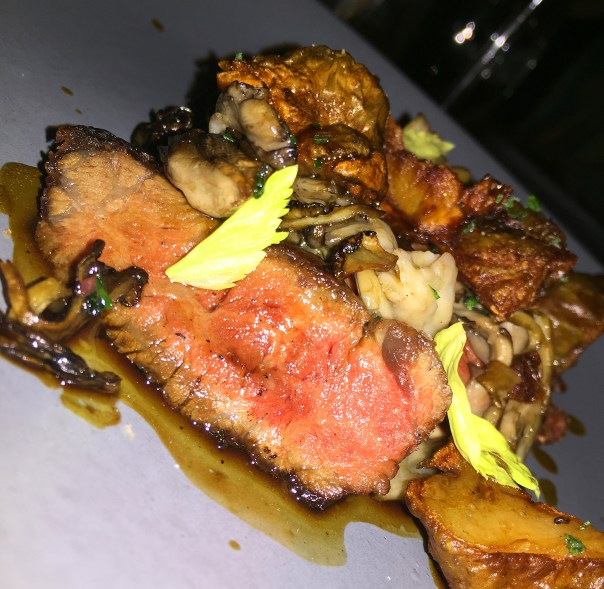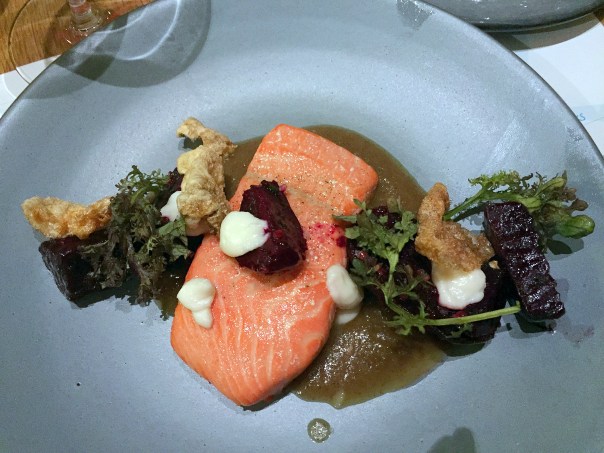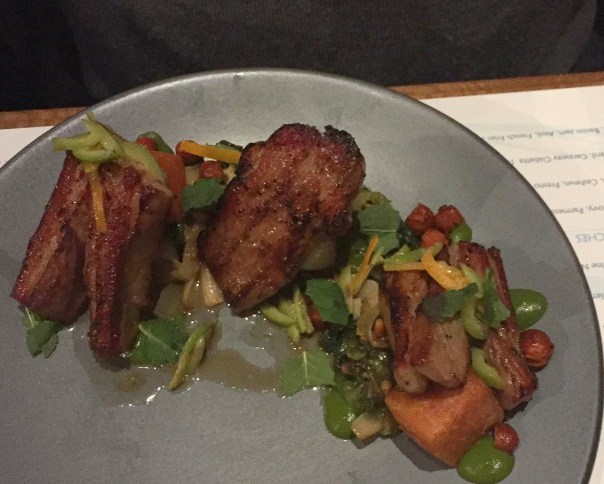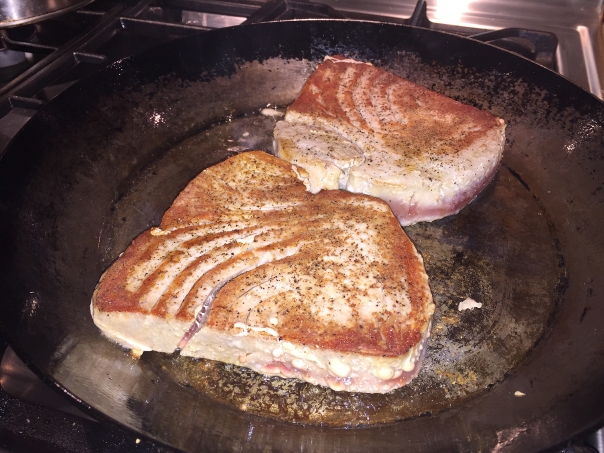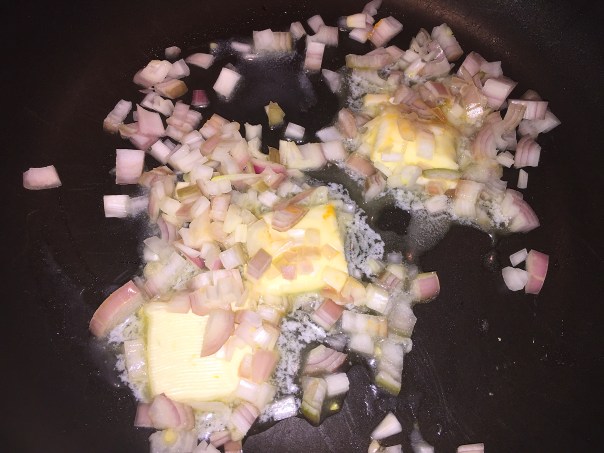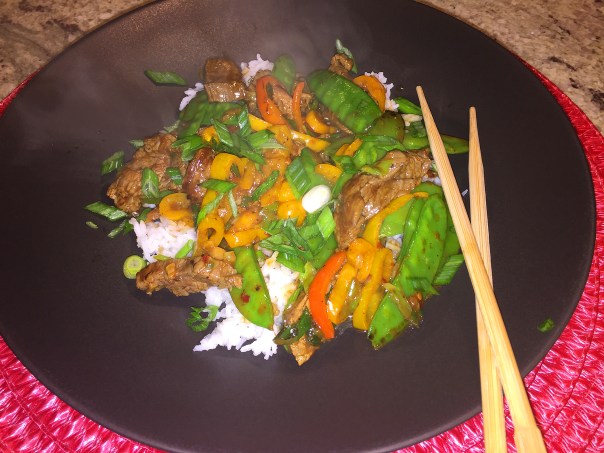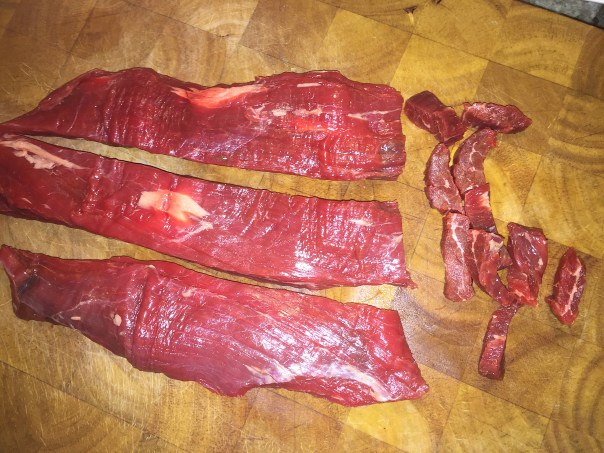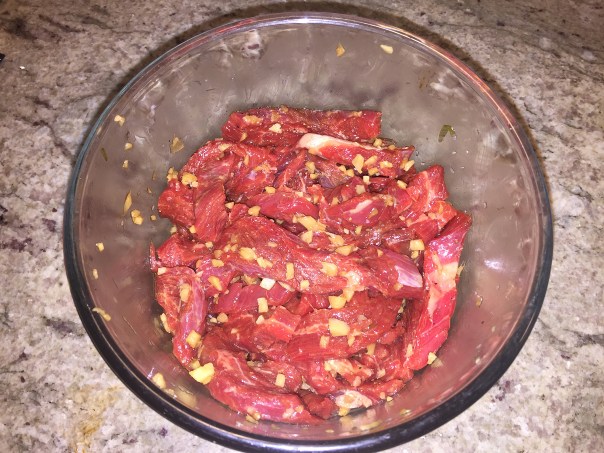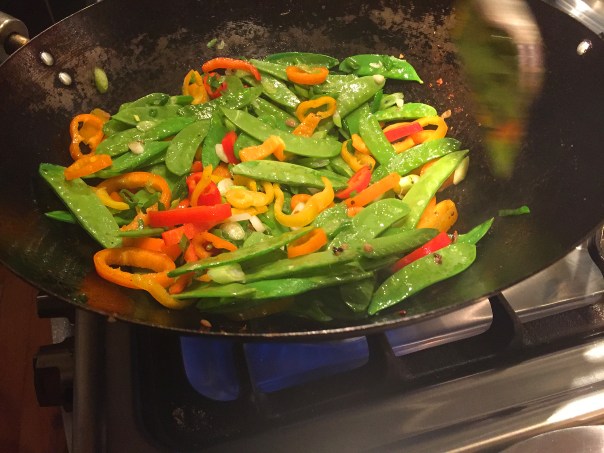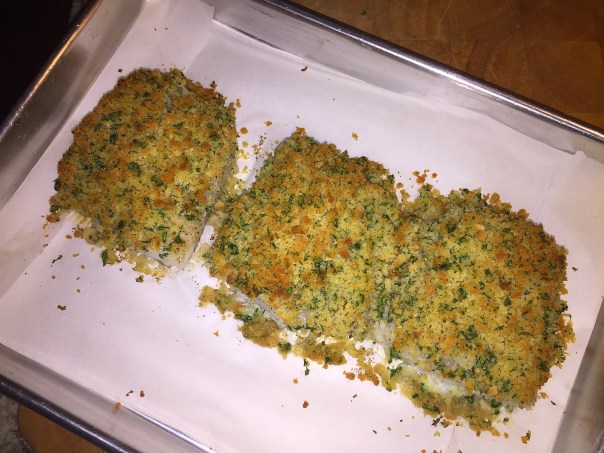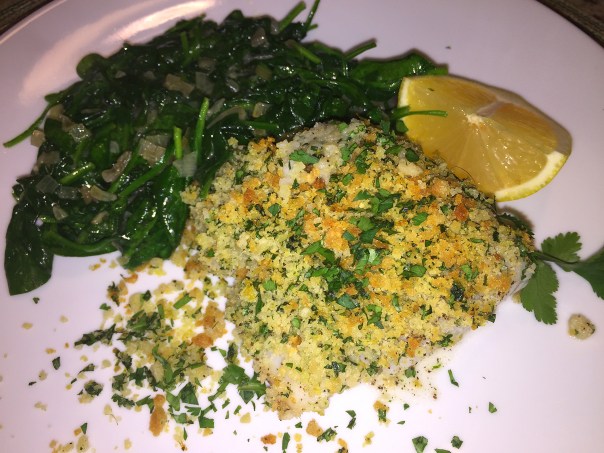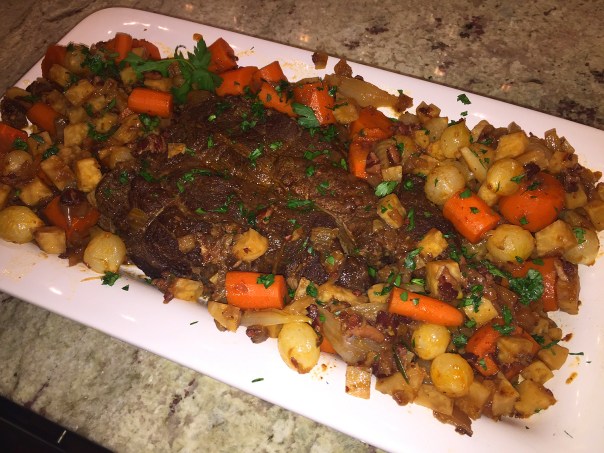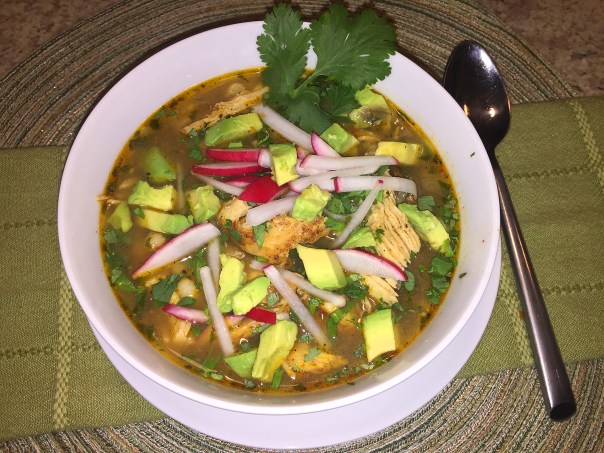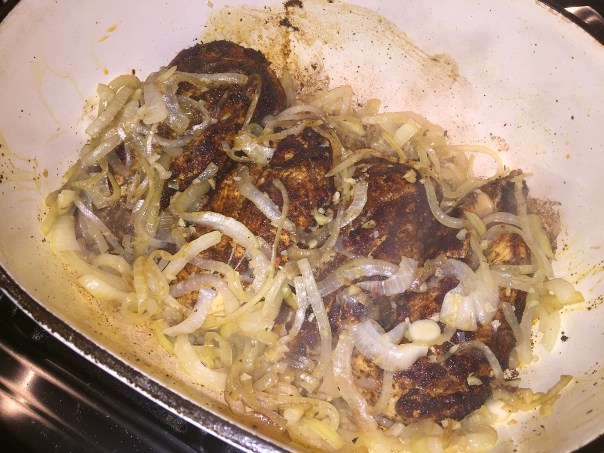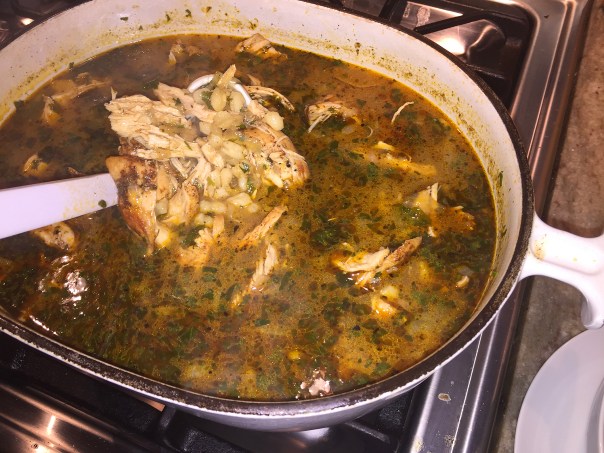All of the ingredients come together quickly in Spiced Lamb Patties and Green Beans with Tahini and make a fantastic, out-of-the-ordinary weeknight meal. A touch of plain yogurt in these Middle Eastern-style lamb patties helps keep them wonderfully succulent, and a dollop of mint-flavored yogurt on the side balances their richness—which next time we’ll double because we used it all up before they were halfway gone!
It’s not always an easy task to find bulk ground lamb sold separately. And of course the day we were food shopping, the store only carried lamb patties. But that worked, I just crumbled them into a bowl and added the necessary ingredients without overworking the mixture, then reformed them loosely into eight thicker patties.

Our couscous was tricolored, one because we had it in stock, and also because I like the colorful aspect. In addition to the chicken broth, cumin and chopped apricots, I included a couple of tablespoons of pinenuts when I added the couscous to the boiling water. Somehow the buttery flavor just goes so well and adds that surprising little bit of texture.
Our veggie side dish, Green Beans with Tahini, is off the charts good! Very simple to make and cooks in the same amount of time as the lamb patties and couscous. But what is Tahini? Tahini is made from sesame seeds, with a little bit of oil mixed in to make it the right consistency, and usually nothing else. It is a ground sesame seed paste, similar to peanut butter and is a creamy, oily, and smooth nut butter rich in calcium.
Like natural peanut butter, the naturally occurring oils in tahini will separate, from the solids so plan on stirring your tahini quite a bit when you first open it, since all of the oil will be on top. Even though it’s a bit of a pain, this is a good thing actually. It means that there’s no additives or chemicals added to prevent it from separating. Tahini is a brilliant pantry ingredient to keep on hand for a creamy yet no-cook sauce.
While it might be a high-calorie food based on volume, a small amount of tahini (you are only using two tablespoons here) goes a long way. It has a rich, nutty flavor that comes through strongly in recipes, plus tahini can benefit your heart, hormonal and skin health even when you use just a small amount. Plus, sesame seeds are a good source of amino acids, vitamin E, B vitamins, trace minerals and fatty acids that all help with skin cell rejuvenation and preventing early signs of aging… I’m listening!

Ingredients
- 2 cups lower-salt chicken broth
- 3-1/2 oz. dried apricots, cut into medium dice (about 1/2 cup)
- Kosher salt
- 1 tsp. ground cumin
- 1-1/3 cups couscous
- 1-1/4 lb. ground lamb
- 5 Tbs. plain Greek yogurt
- 2 large cloves garlic, mashed to a paste with a pinch of salt
- 1 tsp. ground coriander
- Freshly ground black pepper
- 3 Tbs. extra-virgin olive oil
- 2 Tbs. finely chopped fresh mint; more for garnish
Directions
- In a 3-quart saucepan, combine the chicken broth, apricots, 1/2 tsp. salt, and 1/4 tsp. of the cumin; bring to a boil over high heat. Stir in the couscous, remove from the heat, and cover. Let sit until all of the liquid has been absorbed, about 5 minutes.
- Meanwhile, in a large bowl, combine the lamb, 1 Tbs. of the yogurt, the garlic, coriander, the remaining 3/4 tsp. of the cumin, 1 tsp. salt, and 1/2 tsp. pepper. Mix by hand, taking care not to overwork the mixture. Shape into eight 1/2-inch-thick patties.
- Heat 2 Tbs. of the oil in a heavy-duty 12-inch skillet over medium-high heat until shimmering hot. Add the patties and cook, flipping once, until browned on the outside and barely light pink in the center, 5 to 7 minutes.
- Meanwhile, in a small bowl, combine the remaining 4 Tbs. yogurt and the mint.
- Fluff the couscous with a fork. Mix in the remaining 1 Tbs. oil and season with salt and pepper. Divide the couscous and patties among 4 plates. Add a dollop of the minted yogurt on the side and garnish with additional mint.

Only six patties fit in the skillet initially, so I plated them when done, covered with tinfoil then cooked the remaining two.
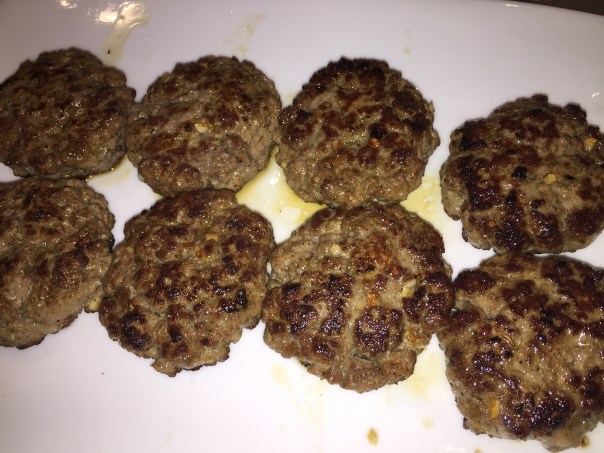
The cooked patties have a nice crust on the outside while retaining a partially light pink interior.
By Nadia Arumugam from Fine Cooking
Green Beans with Tahini
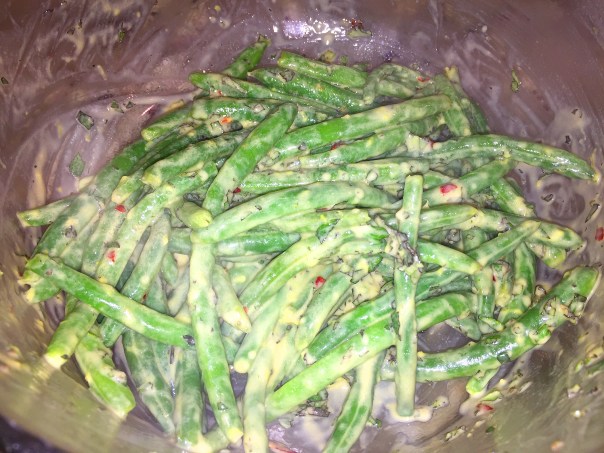
Ingredients
- 1-1/2 lb. green beans, ends trimmed
- Kosher salt
- 2 Tbs. extra-virgin olive oil
- 2 Tbs. tahini
- 1 Tbs. fresh lemon juice
- 1 tsp. finely grated lemon zest
- 2 Tbs. coarsely chopped fresh mint leaves
- Pinch of Aleppo pepper or crushed red pepper flakes
Directions
- In a pot fit with a steamer insert, bring an inch of water to a boil over high heat. Put the green beans in the steamer, sprinkle with kosher salt, cover tightly, and steam until just tender, about 3 to 5 minutes.

- Meanwhile, in a large bowl, whisk together the oil, tahini, lemon juice and zest, 1 tsp. salt, and 2 Tbs. water until combined.
- Add the green beans and toss well to coat. Toss with the mint and Aleppo pepper. Season to taste with salt.

Bean recipe by William Mickelsen from Fine Cooking



 We had already heated the oil in the cast iron skillet when we realized all four chops would not fit at once. Therefore we seared two at a time, then transferred all four to a larger pan that had been heating in the oven. Russ drained and strained the juices from the cast iron skillet and made the pan sauce in the larger pan while the meat rested. Moral of this caption? Just use a very large skillet to begin with!
We had already heated the oil in the cast iron skillet when we realized all four chops would not fit at once. Therefore we seared two at a time, then transferred all four to a larger pan that had been heating in the oven. Russ drained and strained the juices from the cast iron skillet and made the pan sauce in the larger pan while the meat rested. Moral of this caption? Just use a very large skillet to begin with!








 Sauté the cut leeks over medium heat being careful not to brown.
Sauté the cut leeks over medium heat being careful not to brown.


 Cut off the top green blades of the lemongrass, remove several outer tough layers, slice the tender core into pieces at an angle, and smash the plant with flat blade of a knife to release the oils.
Cut off the top green blades of the lemongrass, remove several outer tough layers, slice the tender core into pieces at an angle, and smash the plant with flat blade of a knife to release the oils.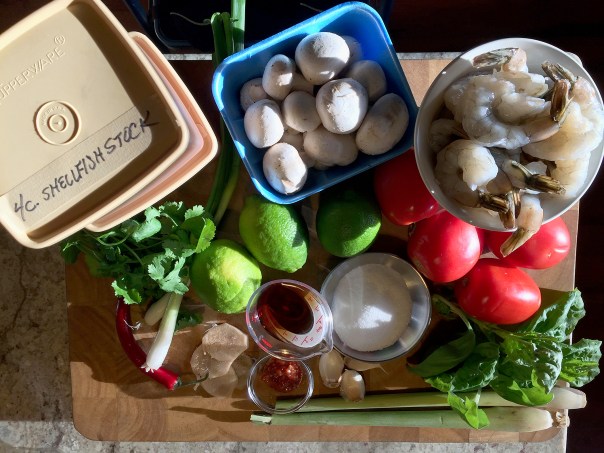


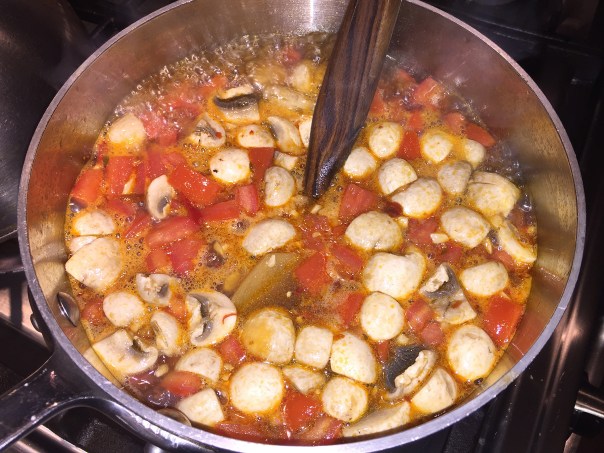




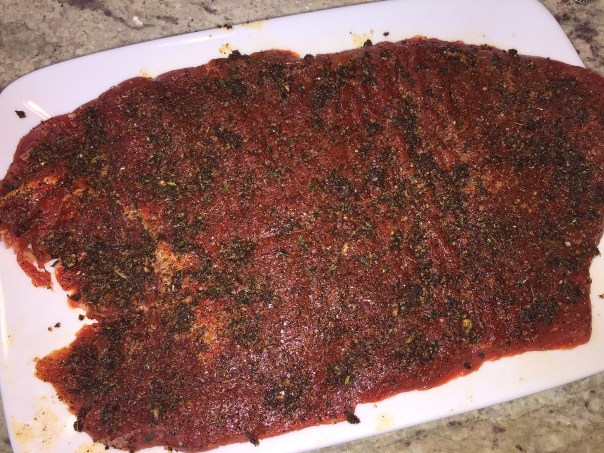


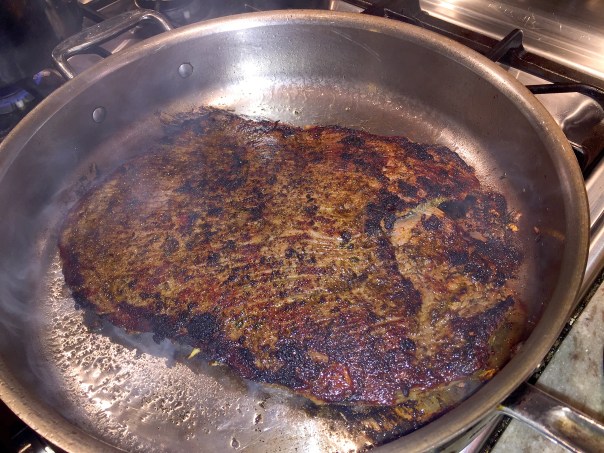
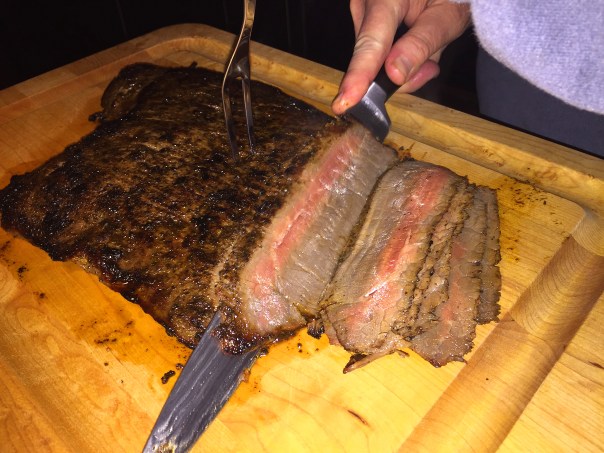





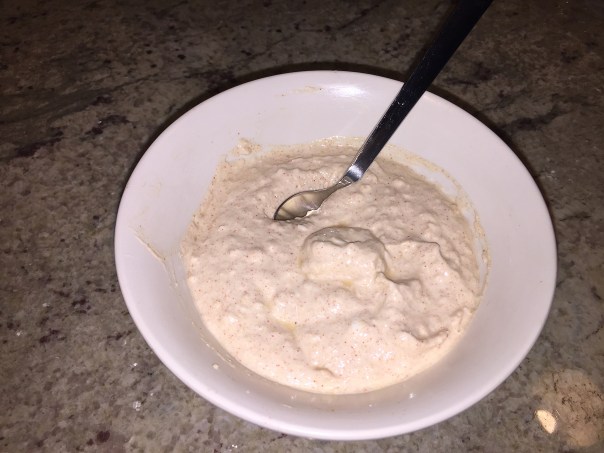



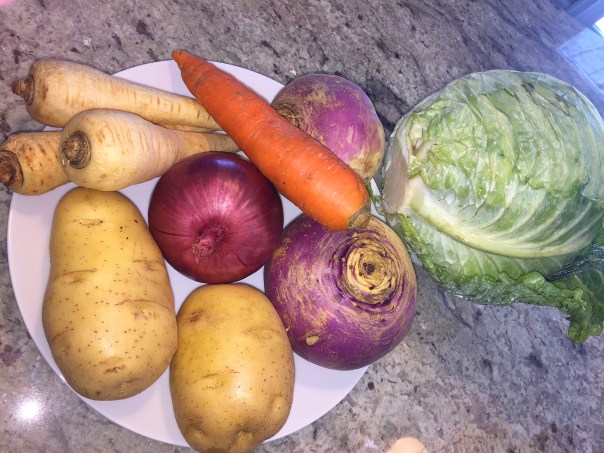




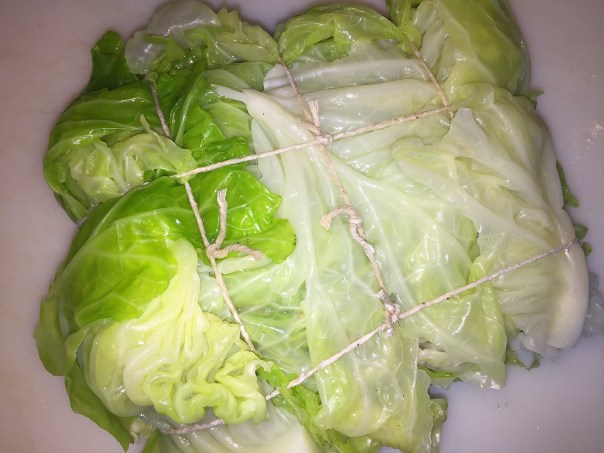
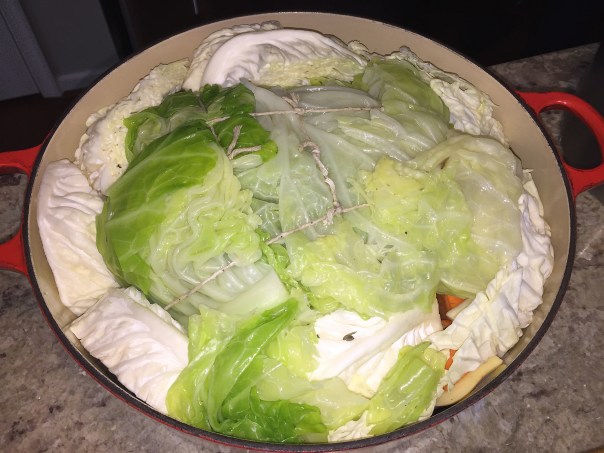

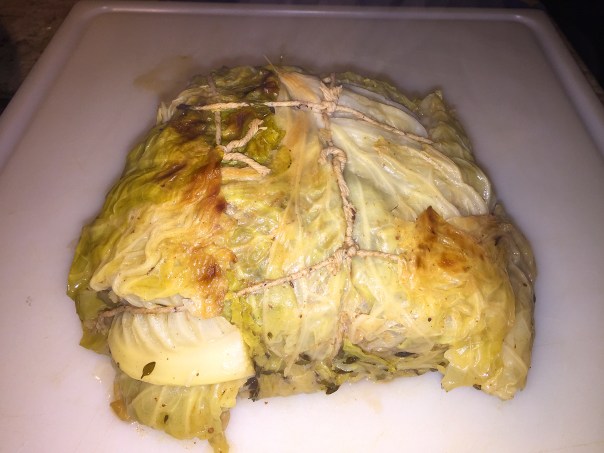







 Lyn’s Blackened Tilapia with assorted vegetables
Lyn’s Blackened Tilapia with assorted vegetables



